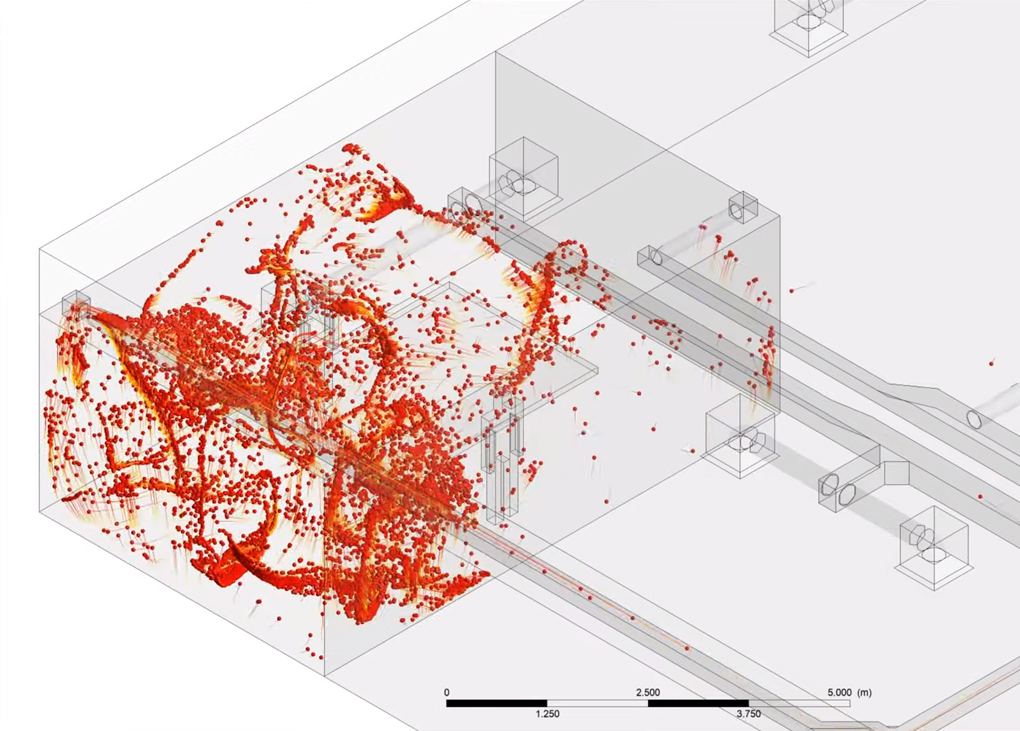A new Australian study published in the latest issue of Ecolibrium has sought to determine the potential for droplets expelled from people when sneezing or coughing to propagate through a typical HVAC system.
“The current pandemic has forced the HVAC community to look closely at the systems we use in buildings,” says co-author and LCI Principal Simon Witts, M.AIRAH. “There have been numerous studies and academic papers that look at the distribution of droplets in a room from a cough or sneeze, but few if any have gone on to study the likelihood of further distribution via the HVAC systems.
“Respiratory diseases such as SARS 2002-2004 and the 1918 Spanish Flu (H1N1) are spread by airborne transmission, direct and indirect contact. There is a growing body of evidence that SARSCoV-2 (COVID-19) is the same.”
According to the study, when a person coughs, shouts or sings, the generated particles come from deep within the lungs and the droplets carried in their breath are small, around 0.5 (μm) micrometre in diameter – 1/200th the width of a human hair. At this size, the interaction between the particle and the air means that gravity has very little effect and they remain suspended in the air stream, known as an aerosol.
These aerosol particles can remain suspended in air streams for significant periods before eventually evaporating or bumping into a surface and coming to rest. In an indoor environment, this significantly increases the indirect potential for infection beyond the widely quoted and referenced 1.5m physical distancing advice.
The primary focus of this study is to model how effective HVAC systems are at distributing droplets that can potentially harbour infections, and determine where these droplets end up. The results can be seen in the video below.
To determine the behaviour of droplets in an HVAC system, the team used a Computational Fluid Dynamics (CFD) model on a theoretical office layout. This consisted of two rooms, an open plan office, and a smaller meeting room or single occupant office connected by only an HVAC system.
Witts says that the modelling used differs from other methods in its sophisticated treatment of aerosols.
“An aerosol is a multi-phase fluid,” says Witts, “a mixture of different materials in different phase states – here gas and liquid. The modelling of multi-phase fluids is complex and time consuming, and because of this we see most worldwide studies concentrating on the gaseous behaviour of the aerosol. Modelling only as a gas ignores the fact that aerosols are suspended droplets with distinct separate physical properties from the gas medium that will come to rest on a surface given the opportunity.”
In the model, a source of droplets of approximate diameter 0.5μm were introduced to the smaller room, and a transient solution was allowed to run for some time before the final particle locations were determined.
It was found that particles were able to pass through the modelled system between rooms, however, at a greatly reduced concentration. The exact amount was determinant on a number of factors, particularly the quantity of turns and fittings in ductwork, filtration levels and initial droplet size and quantity.
The study also demonstrated that good filtration in the HVAC system can significantly reduce the ability of viral laden aerosols to complete the journey from one person to another via the ventilation system.
The modelling showed aerosols settling on HVAC surfaces in significant numbers. Furthermore, research has shown that a virus can survive for considerable periods in the right conditions. At between 20–30°C and 50 per cent humidity, it is possible to detect virus on common surfaces for up to 28 days.
“These temperatures are exactly what we aim to achieve in our buildings and HVAC systems,” says Witts. “Not only does the HVAC system provide the perfect vehicle for distribution, the conditions we maintain can provide the perfect conditions for prolonged survival on surfaces depending on the pathogen.”
Finally, the study confirms that general air movement patterns on a typical building floorplate are very effective at aerosol distribution, and this movement of aerosol has the potential to be a significantly greater issue than distribution of aerosol via the ductwork system itself.
The authors hope that future real-world studies can further explore the results of the modelling.
To read the study, click here.
 Mark Vender
Mark Vender


Leave a Reply